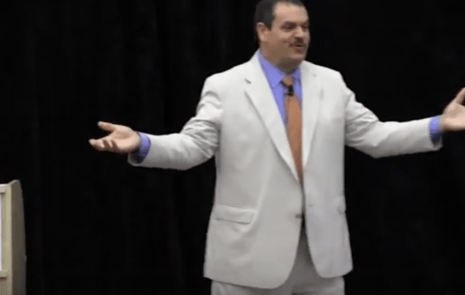
9 Lessons Content Marketing Can Learn from News Media
My career started in radio and newspapers, so I still bring a news viewpoint to content marketing. Here are 9 lessons learned working in the news media that still inform my content marketing work.
1. Deadlines are your friend. Many people dread them. Some people hate them. But I like deadlines.
What I like most is this: Deadlines make things happen. They force projects to get done. They make clients and bosses pay attention and do things now.
In news media, either you make your deadlines or you don’t. There’s no grey area.
My friend Tripp Frohlichstein grew up in TV news. As he says, “You can’t ask people to wait 5 minutes for the 6 o’clock news to begin. The evening news begins at 6 on the dot.”
I hate missing a deadline – and will do anything possible to prevent it. My readers expect my blog every Wednesday, and that’s a commitment I uphold.
2. Don’t become a slave to editorial calendars. Some content marketers plan out their editorial calendars a year in advance. That’s a great discipline.
But … you never know what’s going to happen today that may prove even more relevant to your audience than what’s in the editorial plan you made months ago.
It’s smart to make an editorial schedule and execute it. But don’t let that take your attention off day-to-day news your readers care about.
Follow your editorial schedule, but not slavishly. Improvise. Stay flexible.
3. Write fast and furious. In newspapers, sometimes we had less than an hour to report, write, typeset and layout a front-page story. In radio, we routinely chose headlines during the 30 minutes leading up to a newscast.
Once you’ve got a fresh piece of news, do your interviews and reporting quickly. Make sure you have at least 2 sources for any information. Verify facts to make sure you’ve got them right.
Then write fast and furious. Write the story as if you’re telling it to a friend. Read it out loud so you can make sure your story sounds good.
4. Edit at leisure whenever possible. After writing, take your time to rewrite and edit. Lean hard on your copyeditors.
Follow a strict editing practice whenever it’s possible. But if your deadline’s upon you, better to publish now and correct later.
Why? The freshness of news really matters. No one remembers the second time they heard a story unless the story’s totally changed – which is seldom the case. When you’ve got the story first, run with it.
5. Great headlines grab readers. Many readers never go beyond a headline. The headline is their first moment of truth in encountering new content.
So put your best writers on headlines, Tweets, and short-form content. Write many headlines and choose the best. Take time to test your headlines in social media.
I agree with Ann Handley that headlines are best written after the story, not before. A headline written in advance could handcuff your storyline. Let your story unfold naturally, then let headlines come to light as you write, rewrite, and edit.
6. Names, names, names. Ever noticed that the big city daily papers are suffering, while your local newspaper is doing great?
The reason is names, names, names. This wisdom comes from local newspaper editor Hoover Adams of the Dunn Daily Record. As he says, “The main reason anybody reads a local newspaper is for local names and pictures.”
The more names you put into your content, the more people pay attention to it. How many times have you heard, “Did you see so-and-so’s name was in the paper?” Find reasons to include more names, such as rankings of the 50 best and other such lists.
(A tip of the hat to Chip Heath and Dan Heath, who discuss Hoover Adams’ wisdom in the book Made to Stick.)
7. Pictures, pictures, pictures. People love pictures, and they’re far likelier to pick up your printed content or click on your link when you grab their eyeballs. Content with visuals is almost twice as likely to be seen.
Always include a caption to explain what’s going on. Your caption will be one of the best-read bits of information beyond the headline. Caption your charts and graphs. Use cartoons.
Good original photos trump stock photos. But almost any picture is better than none.
8. Strike a balance between news and evergreen content, curation and creation.
If all your content is evergreen, by design you are competing with many other sources of evergreen content.
Balance evergreen content with today’s news. Monitor news topics of interest to your audience and feel free to newsjack, liberally but fittingly, to add fresh content.
If all your content is curated, by design you are competing with many other curators. If you rely solely on curated content, there’s a good chance readers will have already seen that content from your competitors.
Weave together content you curate with original content you create. Share your unique viewpoint with the world.
Original new content shows up as fresh as hot bread from the bakery. Take the time to make your original content with love.
9. Always keep stories in your back pocket. Things go wrong: The story you planned for today’s blog fell through at the last minute. Your writer got sick. The guy you interviewed left the company to work for a competitor.
Have a Plan B: in the newspaper business we always kept an “overset” file. It contained evergreen content that’s ready to publish at a minute’s notice. Give yourself a resource to turn to when you must meet a deadline, but there’s not enough time to do the story justice.
If you lack an overset file, you may find yourself often typing away with less than an hour until deadline. Deadlines are great, but that kind of pressure in content marketing is usually not necessary.
Create an overset file to stand between you and a deadline disaster. That’s one way to make sure you always meet your deadlines.
What lessons from news media do you apply to content marketing?
Contact Us




